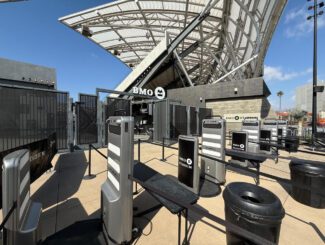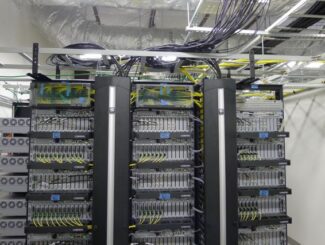
On March 11, 2020, a full house of fans had filled Chesapeake Energy Arena in Oklahoma City, in anticipation of an NBA game between the Thunder and the visiting Utah Jazz. But just before tipoff, the referees convened at midcourt for a discussion. Soon after that, the teams were sent back to the locker rooms, and eventually an announcement was made that the game was cancelled. A player on the Jazz, Rudy Gobert, had tested positive for the coronavirus, an incident that sent the fans home from the venue that night – and ultimately, signaled the end of attending spectator sports as we knew it, for the foreseeable future.
What followed in short order was the closing of worldwide economies and social structures as people everywhere entered stay-at-home quarantines designed to help stop the spread of the disease. All kinds of businesses, especially those like sports events, concerts and other activities involving large public groups, were effectively shut down, with no clear path to a future of when and how they might resume.
Now, as some of the positive effects of the quarantines are being realized, societies around the world are asking when and how more business and recreational activities can resume. And while social-distancing best practices that have emerged in places like grocery stores have provided a model that might allow more businesses to safely serve more customers, the idea of large groups of fans assembling packed together in stadiums during a pandemic still presents a much tougher challenge.
While the desire to return to the tribal gatherings of sports, concerts and other events is widespread, the timing of the “return to venues” is still unknown. The conversations around this topic are numerous and diverse, and involve many factors and factions, including politics, government, economics, biological science, venue operations, and personal safety. While AmpThink is not be in a position to solve the myriad problems that must be addressed, we do see that technology will have a significant role in the
final solution. And that role will be layered.
There is no ‘silver bullet’
Editor’s note: This profile is from our latest STADIUM TECH REPORT, which is available to read instantly online! Inside the issue is our comprehensive study on how venues can cope with Covid-19, plus a profile of Globe Life Field! Start reading the issue now online!
Unfortunately, right now much of the discussion around technology for venue security is increasingly one-dimensional, searching for a silver bullet that doesn’t exist. Heat-sensing cameras, robotic cleaners, disinfectant chemicals, UV lights and mobile-device tracking applications may all have a role, but no single solution solves the problem of “when will fans return” because there isn’t one problem. Technology will just be one part of a larger solution set.
Starting in late March, AmpThink kicked off a partnership with Stadium Tech Report to look at the future of large public gatherings. The goal of the effort was to have meaningful discussions with industry thought leaders to understand the framework for our collective “return to venues.” We are attempting to develop that understanding through the lens of decision makers who will control the process. We’ve broken our analysis into “stages of return.” This phrase reminds us of the top level concerns that must be addressed before the “return to venues” can occur, including: government approval; legal liability mitigation; and the restoration of fan confidence.
What is it is going to take for the government to allow public venues to open?
While venues can propose their own paths to opening their doors to fans, their ability to execute is premised on the assumption that they will be allowed to open their doors. Though opinions on readiness will likely be different from national and local perspectives, the decision to open the doors of venues will rest heavily on the ability to convince public health authorities that the risks of spreading an infection can be managed to the point that they believe that the benefits of gathering a crowd are not outweighed by the risks of the gathering.
Achieving this approval will require that venues are able to explain how the venue will identify and then mitigate the risks of mass public gatherings. This can be achieved on an ad-hoc basis and progress will occur at different speeds in different jurisdictions. However, establishing a national mandate, a framework, and a plan to measure execution can move the conversation along faster – achieving an accelerated return to venues.
If the government says yes to opening a venue, what liability does the venue have and what does it need to do to mitigate the risk?
Any responsible venue operator or owner has to ask if the gains to be made by opening the venue will outweigh the risks. Mortgage payments and balance sheet pressures will influence the decision, but the legal risks will not be ignored.
After addressing official mandates, venue owners and operators must be confident that they can safely open their building. And then, if and when the worst-case scenario happens – infection of some group of attendees – they can answer the tough questions regarding the execution of their plan. Who implemented the plan, how was it implemented, how was its effectiveness measured, were the plan elements repeatable, was training sufficient? The answers could save or damn the venue both legally and in the court of public opinion.
Having a government-endorsed strategy, a well-articulated plan, and a mechanism to document execution will provide venue owners and operators with the legal confidence that they require to open their buildings, and to provide a clear sense of responsibility toward the guests they will invite inside their doors.
Assuming there is an open venue, what has to happen to cause fans to become comfortable with attending a live event?
It is likely that if public health officials and venue owners have reached the decision to re-open public venues, the decision was not arrived at lightly. Buildings will be opening under plans that materially reduce the threat of mass infection at a public venue.
However, fans may remain wary and without an effective vaccine, fans may prefer the comfort (and safety) of their home to the live venue experience.
Communication of the efforts to identify and address the risk of exposure to an infected attendee, proactively identify exposed fans, and otherwise reduce the risks of attendance will need to be effectively communicated. While much of the communication will focus on reaching fans before they arrive at the building, their experience when they reach the venue will be an important part of developing momentum, using fans to build the case that the return to venues is safe.
How technology will help enable the ‘stages of return’
Emerging technologies that addresses critical problems for venues relating to coronavirus (for example threat identification, threat mitigation, sanitation, tracking and contact tracing, messaging, and communication) will take center stage in the coming months. But behind these point solutions there will be a need to build networking infrastructure to make their products work. Devices will need to be connected (for power, or by wire or over the air for networks), traffic will need to be transported, compute resources deployed, and systems built. The success of these systems will depend on architecting reliable, scalable, service provider class networks in these venues.
What is the new normal?
Is the current shutdown permanent? Will all future events be held without fans in attendance? Likely no! But returning fans to LPVs will take time and require a plan that addresses the needs of all stakeholders: Government officials, venue owners and operators, team owners, concert promoters, leagues, athletes and musicians, venue employees and contractors, and of course fans.
On behalf of our customers, we can listen, learn, and position them to execute on a strategy that gets us all to a common goal – the opening our stadiums, arenas, convention centers, malls, and other public
places to the public within a framework that manages the risk that we pose to each other when faced with a pandemic. Stay tuned as we present more findings of our ongoing research and interviews with thought leaders, subject matter experts, technology company leaders and venue, team and school IT professionals in the weeks and months to come.










